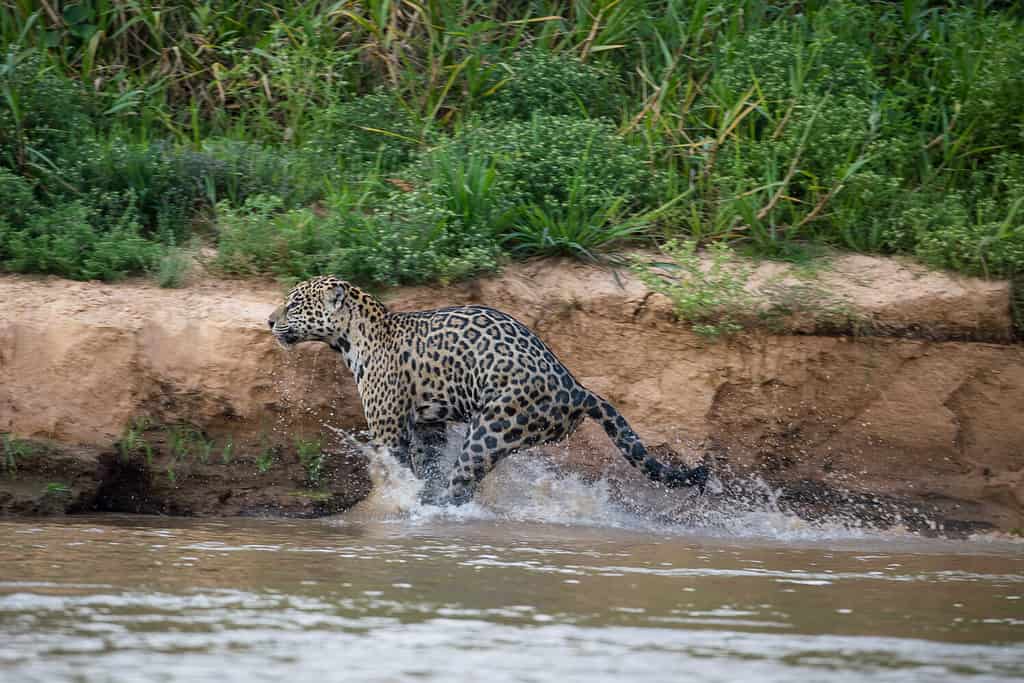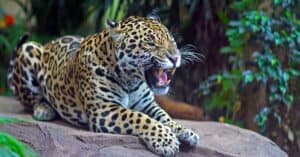Crocodiles and caiman are both members of the Crocodilia order, and the unfortunate individual in this clip is likely a caiman. It has got on the wrong side of this jaguar, and things do not look as if they are going to turn out well for it. On the other hand, the jaguar is looking very comfortable hunting both in and out of the water!
Watch the Watery Hunt Now
Where Do Jaguars Normally Live?
Jaguars are a native species of Central and South America. Their historic range was from Southwestern US to southern Argentina – an area equivalent to twice the size of the US. Sadly, their current range is just over 60 percent of their historic distribution. Camera trapping is being used to gain accurate information on the population numbers and exact range.
We know that they are found in several countries, including Argentina, Brazil, and Ecuador. When it comes to habitat, jaguars need dense vegetation cover to help them stalk prey. Therefore, they are found in dense tropical rainforests, and they like to be close to water. You can often spot them along rivers and around swamps and lagoons. They are very comfortable in water – often swimming from one forested island to another during the flood season. When they are swimming, they hold their head and spine above the water but are happy to dive into the riverbed, looking for food. That said, some are successfully living in dry grassland terrain in Argentina and the southwestern United States.
What Do Jaguars Normally Eat?

Jaguars are comfortable hunting in water.
©Charles Bergman/Shutterstock.com
In this clip, we can clearly see that jaguars have a taste for reptiles! This is unusual amongst big cats. In fact, jaguars are the only big cat species to frequently target reptiles. They also hunt mammals such as capybaras and giant anteaters. You will also see them hunting fish, turtles, and birds. They are able to break tortoise shells with their powerful teeth and then scoop out the flesh from inside. As you can see in this clip, caimans are killed using a crushing bite to the neck. Occasionally, jaguars take domestic cattle, which brings them into conflict with local farming populations.
Jaguars eat between two and three pounds of food a day. The jaguars living in the Pantanal area of Brazil are larger and, therefore, require more food to keep them happy. When feeding, jaguars often eat the heart, liver, and spleen first, as these are highly nutritious – followed by the muscle. They rarely consume the intestines.
The photo featured at the top of this post is © imageBROKER.com/Shutterstock.com
Thank you for reading! Have some feedback for us? Contact the AZ Animals editorial team.





